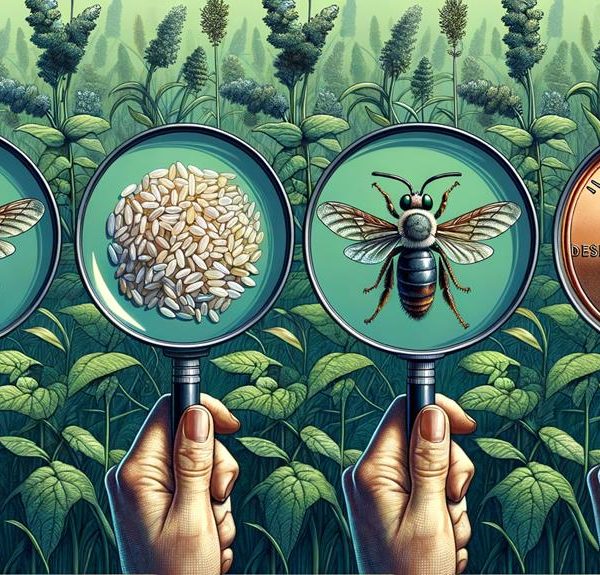Dive into the intriguing world of Cuckoo Wasps and Sweat Bees, a story of cunning deception and vital pollination waiting to be discovered.
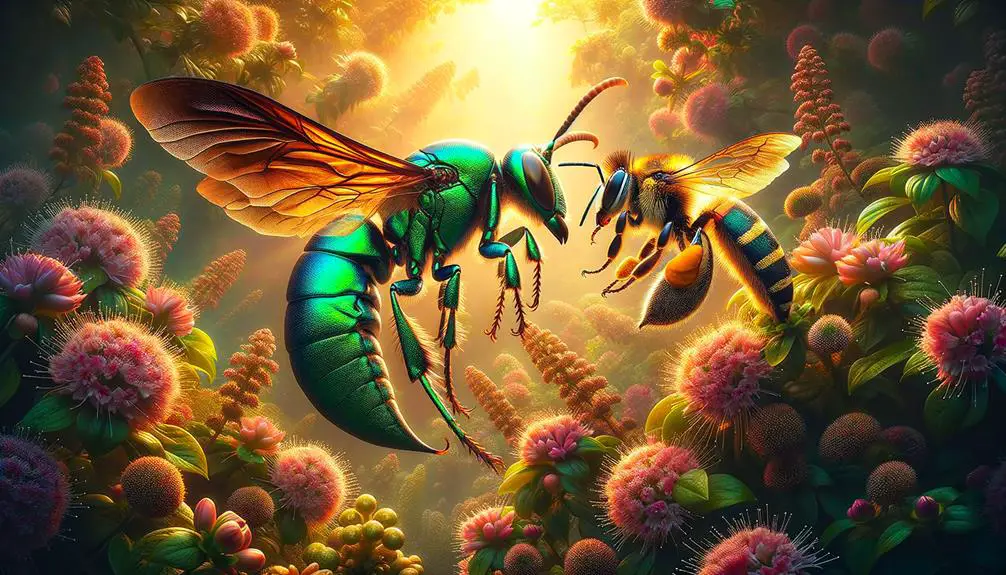
Cuckoo Wasp Vs Sweat Bee
In the world of insects, it's not always black and white, especially when discussing the sly Cuckoo Wasp and the humble Sweat Bee. As you delve into their intriguing lives, you'll uncover a tale of cunning parasitism and diligent pollination.
But what happens when these two worlds collide? How do their interactions shape our ecosystem? There's a whole universe buzzing with activity beneath our notice, waiting for your curiosity to uncover it.
Buckle up, as you're in for an enlightening journey into the microcosm of these fascinating creatures.
Understanding the Cuckoo Wasp
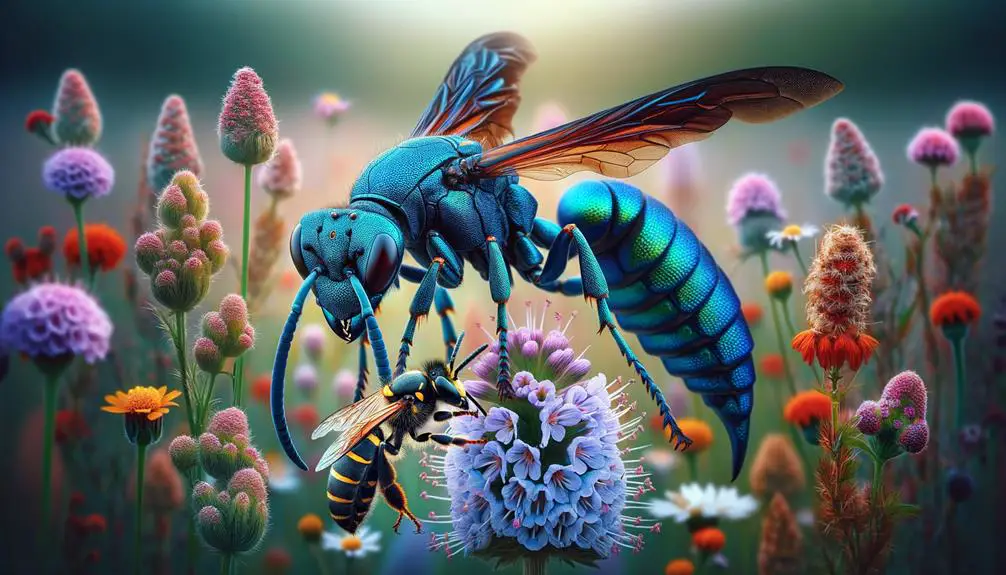
Diving into the world of the Cuckoo Wasp, you'll find that these fascinating creatures, with their metallic blue-green bodies, are more than just a visual spectacle; they play a unique and complex role within the ecosystem. Scientifically known as Chrysididae, these wasps are parasitic in nature. They've mastered the art of survival in a way that might seem unorthodox to us.
You might wonder how they sustain themselves, given that they don't build their own nests or hunt for food. Here's where their survival instincts kick in. These wasps lay their eggs in the nests of other insects, primarily bees, and wasps. They're named 'Cuckoo' after the cuckoo bird, which exhibits similar behavior.
Their shiny, hard exoskeletons serve a purpose beyond mere aesthetics. They're designed to withstand attacks from host insects. When threatened, they can roll up into a protective ball, an adaptation that makes them almost invincible in the insect world. They're also equipped with a chemical disguise, masking their presence in the host's nest.
Life Cycle of Sweat Bees
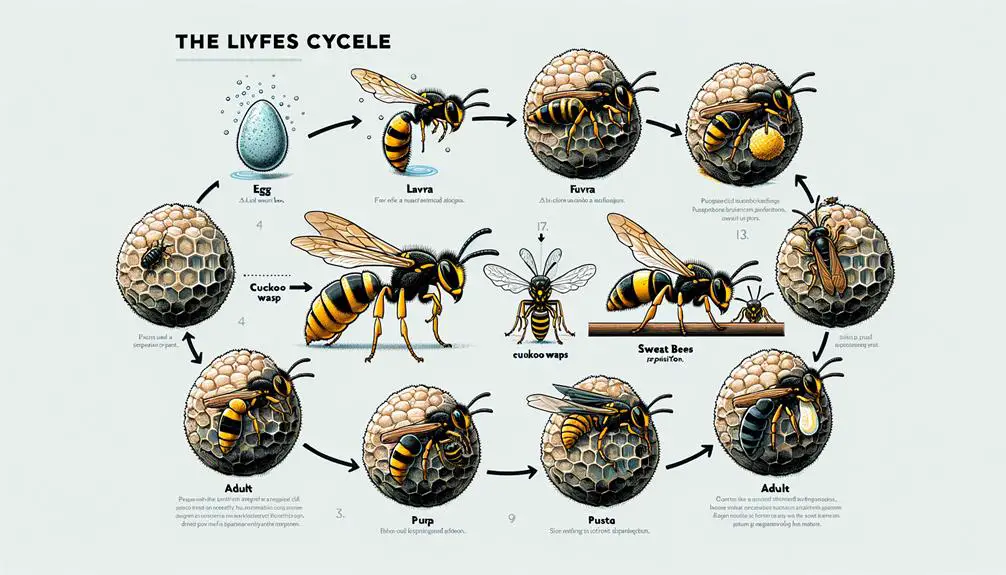
While the parasitic nature of Cuckoo Wasps is fascinating, it's equally interesting to examine the life cycle of their unsuspecting hosts – the Sweat Bees.
You'll find that the life cycle of a Sweat Bee is divided into four distinct stages:
- Egg
- Larva
- Pupa
- Adult
The queen bee starts the cycle by laying her eggs in the spring. She'll often construct a small burrow in the ground where she'll deposit the eggs. Each egg is left with a supply of pollen and nectar, which serves as the larva's first meal once it hatches.
The next stage is the larva stage. The larvae are grub-like and feed on the reserves left by the queen. Once they've consumed their fill, they transform into pupae. It's during this stage that the metamorphosis into an adult bee occurs.
Cuckoo Wasp: A Clever Parasite
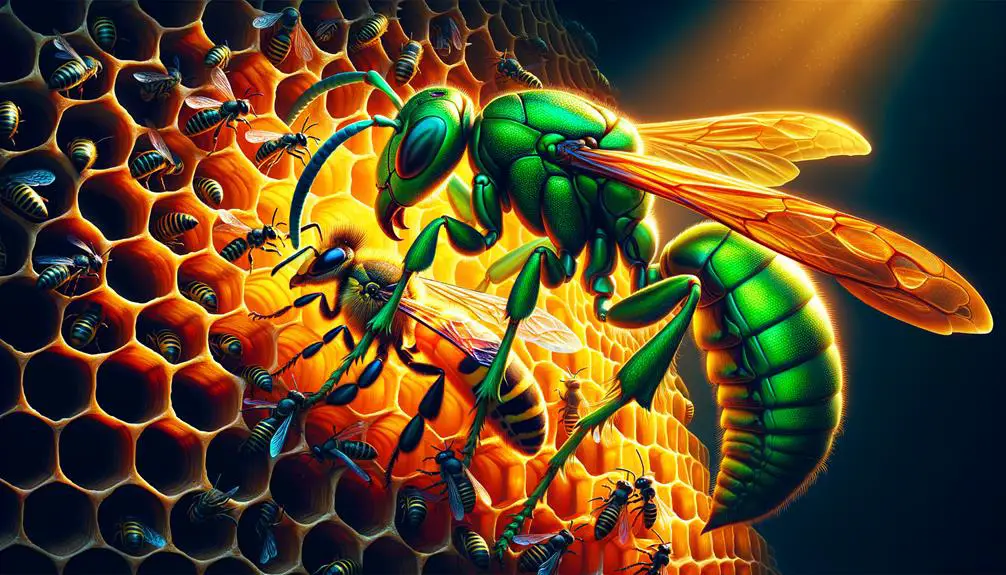
In the intricate dance of nature, you'll find the Cuckoo Wasp, a crafty parasite that leverages the life cycle of the Sweat Bee for its own survival. This wasp doesn't build its own nest or gather food for its offspring. Instead, it cunningly invades the nests of unsuspecting Sweat Bees.
The female Cuckoo Wasp, armed with a hardened ovipositor, pierces the cell walls of the Sweat Bee's nest. She then deposits her eggs inside, often right next to the Sweat Bee's own eggs. This is where the Cuckoo Wasp's parasitic nature truly shines. Once hatched, the Cuckoo Wasp larva consumes the host's food, ultimately starving the Sweat Bee's offspring.
However, it's not just about survival. You'd notice that the Cuckoo Wasp's body exhibits a metallic sheen, an adaptation that serves as a protective armor against the stings of the Sweat Bees. This allows them to infiltrate nests without being fatally injured.
Sweat Bee Social Structure

Now, let's turn our attention to the Sweat Bee, a fascinating insect with a complex social structure that significantly influences its interactions with the Cuckoo Wasp. The Sweat Bee, unlike solitary bee species, exhibits a variety of social behaviors that contribute to their survival.
They organize themselves in a way that's reminiscent of many eusocial insects. Here's a snapshot of their social structure:
- *Queens*: The queen, typically the mother, is the reproductive member of the colony. She's responsible for laying all the eggs.
- *Workers*: Workers are usually offspring of the queen who carry out various tasks such as foraging for food, defending the colony, and caring for the larvae.
- *Drones*: Male bees, or drones, have a primary function of mating with the queen. They don't participate in other colony activities.
- *Larvae*: The developing bees, or larvae, are taken care of by the worker bees.
This structured hierarchy plays a crucial role in the Sweat Bee's life cycle, and it sets the stage for interaction with the Cuckoo Wasp. Understand that these social dynamics may be altered by external factors, including parasites like the Cuckoo Wasp. By comprehending this structure, you'll better grasp the intricate relationship between these two species.
Interaction and Impact: Cuckoo Wasp Vs Sweat Bee

You'll find the interaction between the Cuckoo Wasp and the Sweat Bee truly fascinating, as the former's parasitic lifestyle significantly impacts the latter's social structure and survival strategies. As a cunning parasite, the Cuckoo Wasp exploits the Sweat Bee's industrious nature, infiltrating their nests to lay its eggs.
When the Cuckoo Wasp's larvae hatch, they consume the Sweat Bee's offspring and their provisions, essentially hijacking the bee's reproductive effort. This parasitic intrusion forces the Sweat Bee to adapt its survival strategies. You'll notice that the Sweat Bee starts to develop defensive behaviors, such as nest guarding and aggressive responses to intruders.
However, the Cuckoo Wasp, with its armored exoskeleton, is well equipped to withstand these defenses, making the struggle between the two a relentless cycle of adaptation and counter-adaptation.
This interaction not only alters the Sweat Bee's behavior but also impacts the local ecosystem. The decline in Sweat Bee populations could potentially affect the pollination of plants they frequent, demonstrating how one small parasitic wasp can ripple through an ecosystem. Thus, the Cuckoo Wasp's interaction with the Sweat Bee is a compelling example of the intricate, dynamic relationships found in nature.
Conclusion
In conclusion, you've seen the cunningness of the Cuckoo wasp, a clever parasite exploiting the social structure of Sweat bees. The Sweat bee's lifecycle is disrupted, resulting in a fascinating, yet ruthless interaction.
This relationship impacts not just these two species, but also the broader ecosystem. By understanding these dynamics, you're better equipped to appreciate the intricate complexities within our natural world.
Remember, every organism, no matter how small, plays a vital role in our environment.


